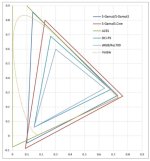I received today this mike:
https://www.thomann.de/gb/the_tbone...iZ2IiLCJjdXJyZW5jeSI6NCwibGFuZ3VhZ2UiOiJlbiJ9
Not expensive, but works fine with the FX6 (requires +48V ON) and fits well with the FX6 support (diameter 25mm)
https://www.thomann.de/gb/the_tbone...iZ2IiLCJjdXJyZW5jeSI6NCwibGFuZ3VhZ2UiOiJlbiJ9
Not expensive, but works fine with the FX6 (requires +48V ON) and fits well with the FX6 support (diameter 25mm)

